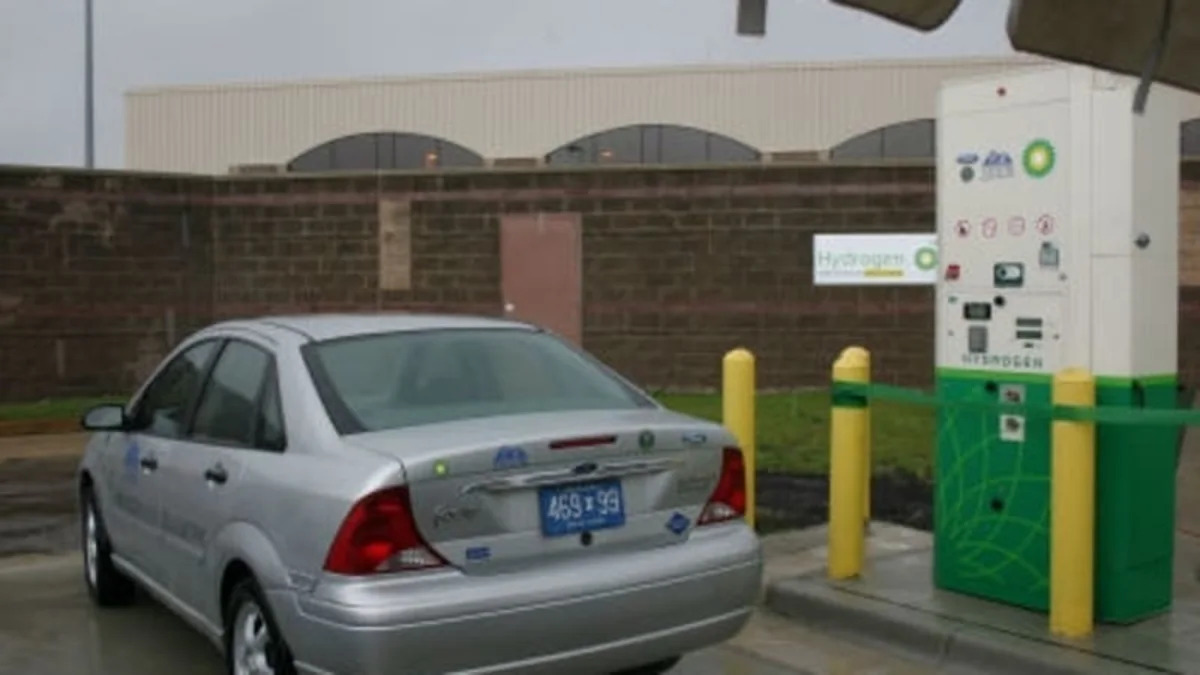Prior to the opening of the new Taylor, MI hydrogen filling station yesterday, AutoblogGreen got to tour the facility. This station was built by a partnership between Ford, BP and BOC Group. The BOC Group actually supplies the hydrogen for the station and BOC Project Development Manager for Hydrogen Energy Robert Boyd explained how this system works. With a traditional gas station, a big storage tank is buried in the ground and filled with fuel. When you put the nozzle in the car a pump in the tank pushes the liquid fuel through the hose into the car's gas tank. The process is a little more complex for hydrogen. Behind the brick wall beyond the pump in the top photo is the hydrogen distribution system. More after the jump.
The first stage of the process is the main storage tank. This tank holds up to 9,000 gallons of liquid hydrogen. However, both the fuel cell and internal combustion Ford vehicles use gaseous hydrogen. That means that the liquid has to be transferred to gas in a controlled manner.

Once the liquid hydrogen leaves the tank it goes into the vaporizer towers, which are basically just heat exchangers. This allows the liquid to boil.

In order to store a reasonable amount of fuel on board the vehicles it needs to be compressed. The compressor station pressurizes the hydrogen gas coming from the vaporizers up to 5,000 psi.

From the compressor station the gas moves into a bank of storage tanks from which it actually gets pumped into the vehicles. More on that last step in a future post.



Sign in to post
Please sign in to leave a comment.
Continue